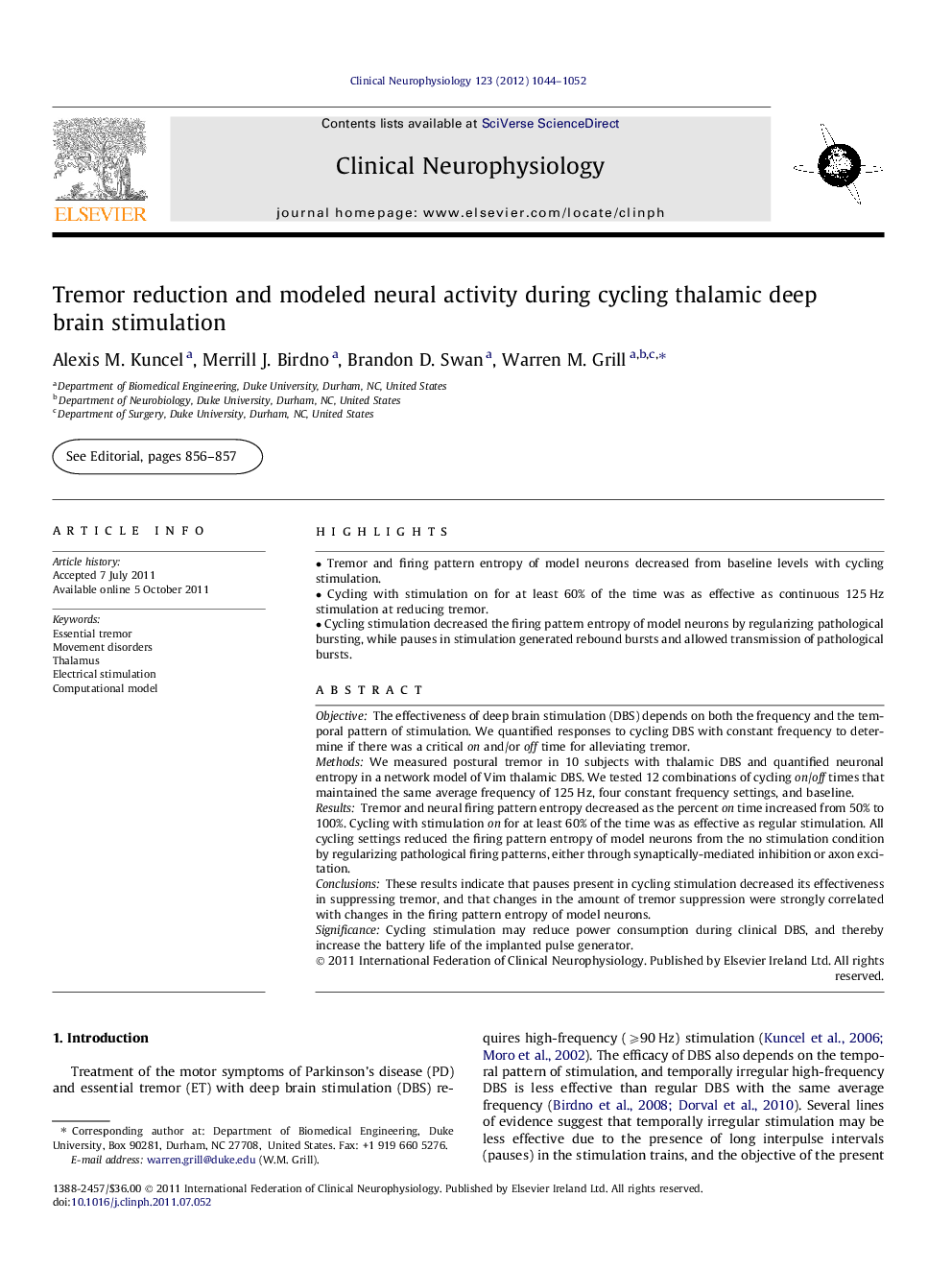| Article ID | Journal | Published Year | Pages | File Type |
|---|---|---|---|---|
| 3045299 | Clinical Neurophysiology | 2012 | 9 Pages |
ObjectiveThe effectiveness of deep brain stimulation (DBS) depends on both the frequency and the temporal pattern of stimulation. We quantified responses to cycling DBS with constant frequency to determine if there was a critical on and/or off time for alleviating tremor.MethodsWe measured postural tremor in 10 subjects with thalamic DBS and quantified neuronal entropy in a network model of Vim thalamic DBS. We tested 12 combinations of cycling on/off times that maintained the same average frequency of 125 Hz, four constant frequency settings, and baseline.ResultsTremor and neural firing pattern entropy decreased as the percent on time increased from 50% to 100%. Cycling with stimulation on for at least 60% of the time was as effective as regular stimulation. All cycling settings reduced the firing pattern entropy of model neurons from the no stimulation condition by regularizing pathological firing patterns, either through synaptically-mediated inhibition or axon excitation.ConclusionsThese results indicate that pauses present in cycling stimulation decreased its effectiveness in suppressing tremor, and that changes in the amount of tremor suppression were strongly correlated with changes in the firing pattern entropy of model neurons.SignificanceCycling stimulation may reduce power consumption during clinical DBS, and thereby increase the battery life of the implanted pulse generator.
► Tremor and firing pattern entropy of model neurons decreased from baseline levels with cycling stimulation. ► Cycling with stimulation on for at least 60% of the time was as effective as continuous 125 Hz stimulation at reducing tremor. ► Cycling stimulation decreased the firing pattern entropy of model neurons by regularizing pathological bursting, while pauses in stimulation generated rebound bursts and allowed transmission of pathological bursts.
